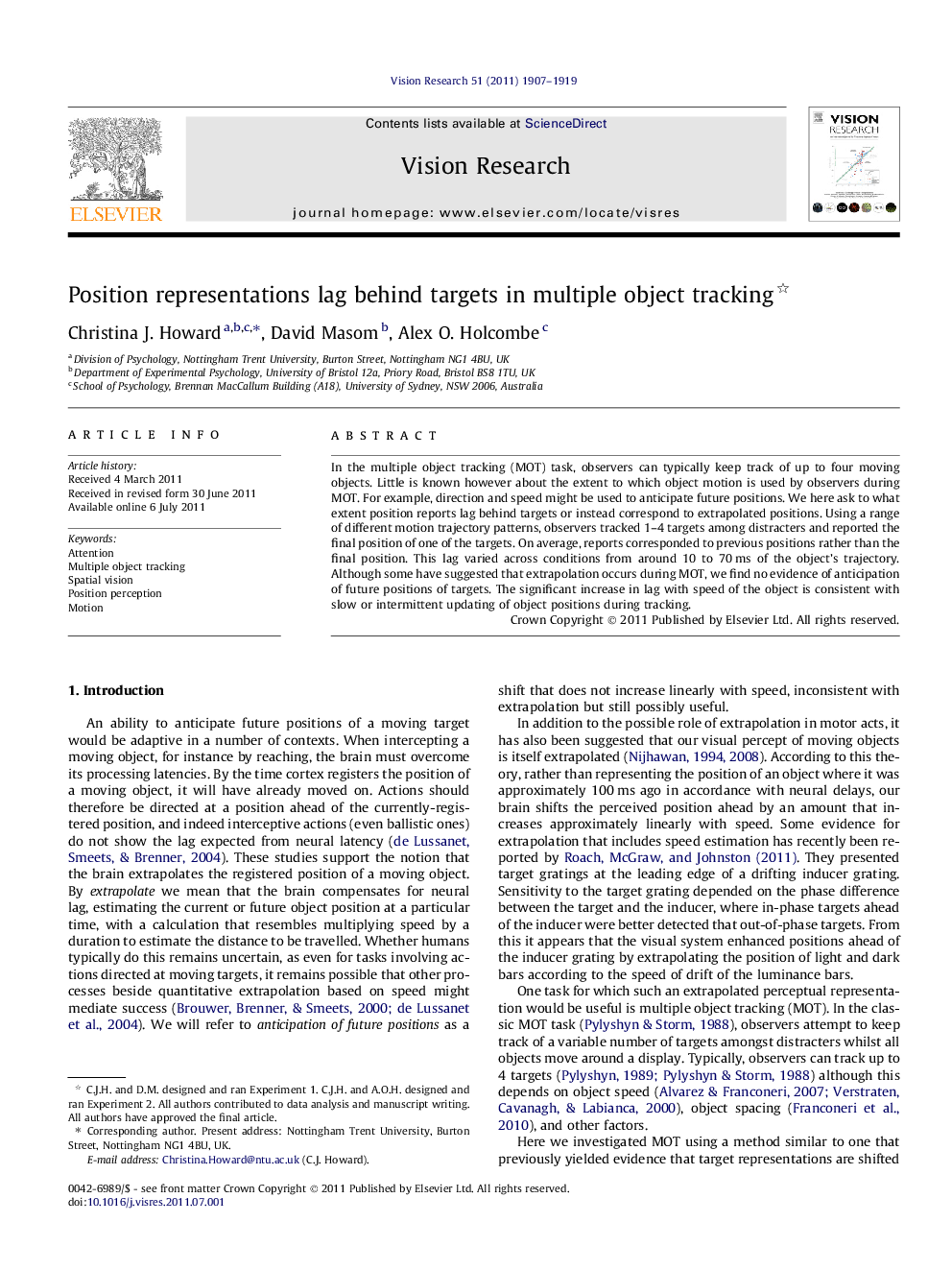| Article ID | Journal | Published Year | Pages | File Type |
|---|---|---|---|---|
| 6203739 | Vision Research | 2011 | 13 Pages |
In the multiple object tracking (MOT) task, observers can typically keep track of up to four moving objects. Little is known however about the extent to which object motion is used by observers during MOT. For example, direction and speed might be used to anticipate future positions. We here ask to what extent position reports lag behind targets or instead correspond to extrapolated positions. Using a range of different motion trajectory patterns, observers tracked 1-4 targets among distracters and reported the final position of one of the targets. On average, reports corresponded to previous positions rather than the final position. This lag varied across conditions from around 10 to 70Â ms of the object's trajectory. Although some have suggested that extrapolation occurs during MOT, we find no evidence of anticipation of future positions of targets. The significant increase in lag with speed of the object is consistent with slow or intermittent updating of object positions during tracking.
⺠We examine how the positions of objects are perceived during multiple object tracking from moment to moment. ⺠We had observers track 1-4 four target objects amongst distracters using a range of different motion types. ⺠We find that observers' reports of the final positions of objects consistently lagged behind their actual final positions.
